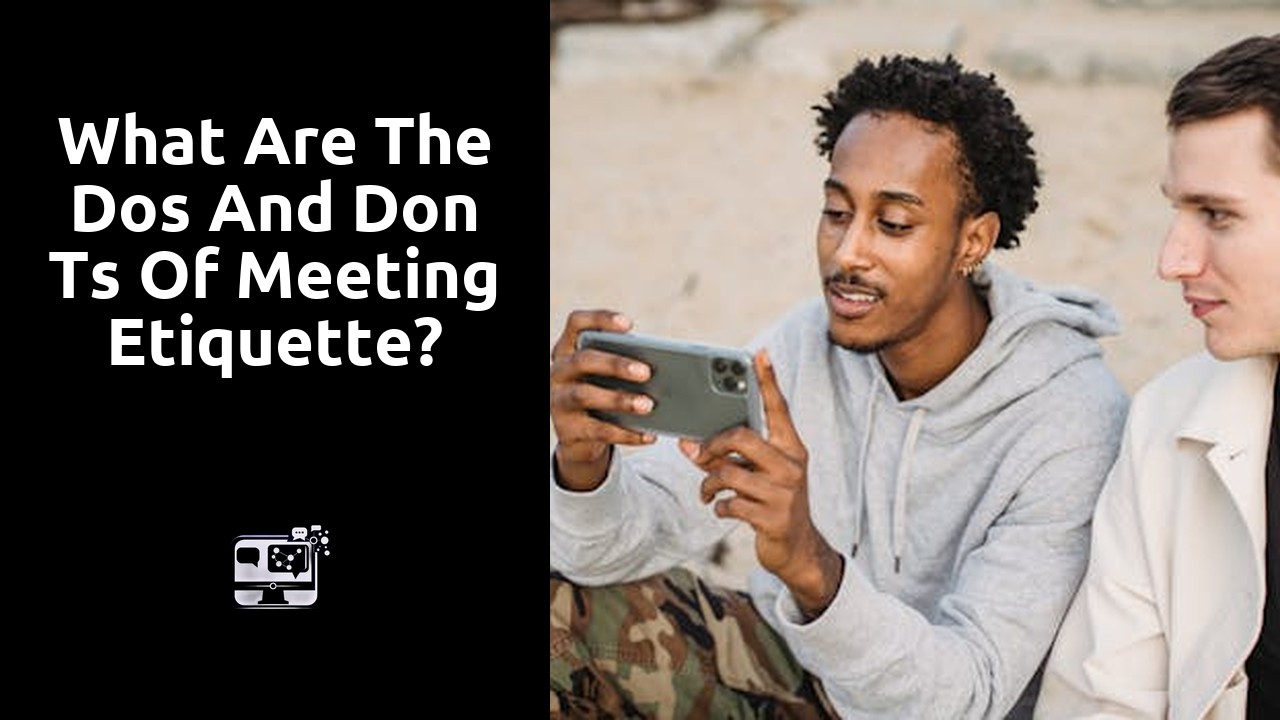What are the dos and don ts of meeting etiquette?

Professionalism
Maintaining professionalism in any meeting setting is paramount for creating a positive and productive environment. It is important to arrive on time, dressed appropriately for the occasion, and prepared with any necessary materials or information. Demonstrating respect for others' time and contributions by actively listening and engaging in a courteous manner is key to fostering a collaborative atmosphere.
Furthermore, maintaining a professional demeanor includes refraining from disruptive behaviours such as interrupting others, using inappropriate language, or engaging in side conversations. Non-verbal cues, such as posture and eye contact, also play a significant role in displaying professionalism during meetings. By upholding these standards, individuals can contribute to a successful and harmonious meeting experience for all participants.
Maintaining a Respectful Demeanor
Maintaining a respectful demeanor in meetings is crucial for successful interactions. Showing respect towards colleagues by actively listening to their opinions and viewpoints is key. Avoid interrupting others while they are speaking, as it can be perceived as rude and dismissive.
Additionally, maintaining professional courtesy by refraining from side conversations or using electronic devices can demonstrate your respect for the meeting and its participants. Non-verbal cues such as making eye contact and nodding in acknowledgment can also show that you are engaged and respectful towards the speaker. Remember, respect is the cornerstone of effective communication in any professional setting.
Table Manners
When it comes to table manners in professional settings, it is crucial to display sophistication and respect for those around you. Avoiding loud chewing, speaking with food in your mouth, or reaching over others to grab something are basic etiquettes that should always be adhered to. Remember to use utensils appropriately, hold them correctly, and avoid making unnecessary noises while eating.
Additionally, being mindful of portions and pacing yourself during a meal is key. Refrain from consuming or serving excessively large portions, as this could be perceived as wasteful or disrespectful. Always wait for everyone to be served before starting to eat and engage in polite conversation while being mindful of not disrupting the flow of the meeting.
Dining Dos and Don'ts
When attending a business meeting where dining is involved, it is essential to be mindful of your table manners. Make sure to place your napkin on your lap as soon as you are seated. Avoid talking with food in your mouth and chew with your mouth closed. It is also important to wait for everyone at the table to be served before starting to eat.
Additionally, be considerate of your dining companions by engaging in polite conversation and refraining from disruptive habits like using your phone during the meal. Remember to use the appropriate utensils for each course and to pace yourself accordingly. Lastly, always remember to thank the host or organizer for arranging the meal and for their hospitality.
Meeting Agendas
When it comes to setting up effective meeting agendas, the key is to ensure that the objectives of the meeting are clearly outlined. Clarifying the purpose of the meeting at the beginning helps participants stay focused and engaged throughout the discussion. A well-defined agenda should include the topics to be covered, the time allocated for each item, and any necessary materials or pre-work that attendees need to review beforehand.
Additionally, it is important to prioritize items on the agenda based on their level of importance and relevance to the overall meeting goals. This helps in managing time efficiently and ensures that crucial topics are addressed first. By structuring the agenda in a logical sequence and allocating appropriate time for each item, meetings can be more productive and lead to meaningful outcomes.
Following the Meeting Schedule
A well-organized meeting schedule is pivotal to the success and efficiency of any business meeting. Clear expectations and timelines ensure that everyone involved can prepare adequately and contribute effectively to the discussion. Always aim to start the meeting on time, as delays can disrupt the flow and cause frustration among participants. Additionally, sticking to the allocated time for each agenda item helps maintain focus and productivity throughout the meeting.
In the event that discussions run longer than anticipated, it is essential to be flexible and adapt the schedule accordingly. Prioritize the most critical agenda items and allocate time accordingly to ensure that essential topics are adequately covered. However, be mindful of not rushing through crucial points to accommodate the time constraints, as this may compromise the quality of decisions made during the meeting.
FAQS
What should I wear to a meeting to maintain professionalism?
It is best to dress professionally in business attire, such as a suit or dress pants and a blouse. Avoid wearing anything too casual or revealing.
Is it okay to interrupt someone during a meeting?
No, it is important to listen actively and respectfully to others without interrupting. Wait for your turn to speak and avoid talking over others.
How should I behave during a business lunch or dinner meeting?
Make sure to use proper table manners, such as keeping your elbows off the table and chewing with your mouth closed. Also, be mindful of your dining etiquette, such as not talking with your mouth full.
Should I prepare an agenda for the meeting?
Yes, it is recommended to have a clear agenda for the meeting to keep it organized and on track. This will help ensure that all topics are covered efficiently.
What should I do if the meeting is running behind schedule?
If the meeting is running behind schedule, it is important to stay focused and try to wrap up discussions in a timely manner. Avoid going off on tangents and stick to the agenda.